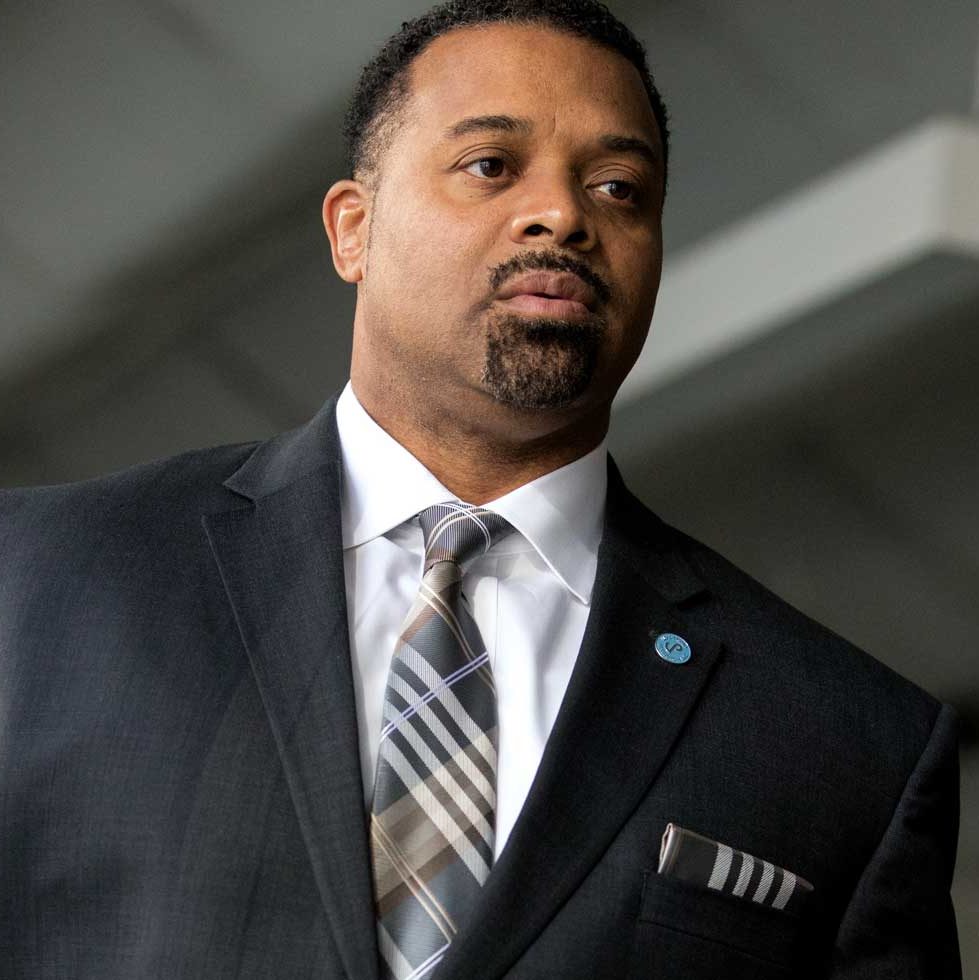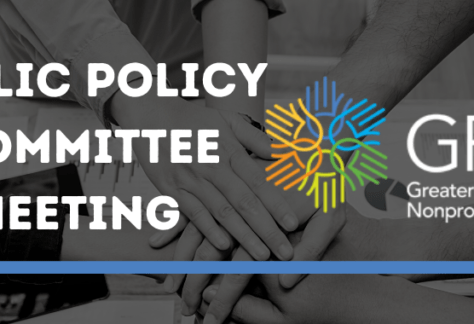Meeting Overview
The Forbes Funds was joined by Anne Gingerich, MSW, of Pennsylvania Association of Nonprofit Organizations (PANO) to discuss Pennsylvania state nonprofit solvency fees and how the nonprofit sector might respond at the legislative level. A recording of the call can be accessed here. You can also get involved with advocacy efforts with The Forbes Funds and the Greater Pittsburgh Nonprofit Partnership and join our GPNP Public Policy Committee’s next design thinking workshop on March 18th here.
Remarks from Fred Brown
Fred Brown, President and CEO of The Forbes Funds, kicked off the meeting with reflections on adapting to change, flux, and growth within the nonprofit sector. In his remarks, he noted that change is an inevitability, but the level of growth that an organization has is dependent on its commitment to upward mobility and its vision. Honoring the way work has transformed over time – the pivoting, innovation, and alignment – is essential to reimagining how work can move forward.
“Change is inevitable, and growth is an option.” – Fred Brown
To that end, Brown introduced Colleen Young as an incoming leader, expressing excitement about this role being filled and the opportunities that await under Young’s leadership.
Introduction to Colleen Young
Colleen Young, MSW is the incoming Greater Pittsburgh Nonprofit Partnership Director. She joined the community solutions call to share more of her background and mark her formal position as Director of GPNP. Young brings coalition-building experience and co-design solutions to The Forbes Funds. Her background in multiple agencies throughout the Allegheny County region will be an asset for partnership building and advocacy across the nonprofit sector.
In her introductory remarks, Colleen shared her enthusiasm to be stepping into a leadership role and building community partnerships. She is looking forward to learning more about what matters to nonprofits in the Greater Pittsburgh region and how to leverage collective strengths in ways that help community members thrive.
Welcome, Colleen!

Public Policy Briefing from Arthur Pang
At the Federal Level
COVID death rates are down, and things are looking up as the Johnson & Johnson vaccine received emergency authorizations. While these developments are promising and contribute to the hope for herd immunity by mid-to-late summer, there appear to be some technological barriers to scheduling and accessing vaccine appointments.
In economic news, the $1.9 T spending package received House approval, with no minimum wage increase despite widespread popularity among voters. The Affordable Care Act is also being revitalized within relief bill, with more generous provisions for private plans, Medicaid expansion, and more.
State Updates
As for state news, half a million shots were administered last week, increasing the number of vaccinated Pennsylvanians. Pittsburgh Public Schools are planning for a phased return in April as cases continue to decline and efforts to vaccinate educators increase. Unfortunately, nearly 40 inmates at Allegheny County jail test positive for COVID, sparking concern around population safety in correctional settings.
On a related note, unemployment continues to fall and there are disproportionate impacts on POC and 25 to 35-year-old age group. As the Pittsburgh region work to persist through the pandemic, attention to disparate impacts will be necessary for an equitable recovery.
Riverlife proposed parks in the Strip District and further riverfront development, as well as investment in public artwork at city park. In other environmental news, Gov. Wolf is turning attention to urban agriculture grants (micro and collaboration) to support children and families’ access to fresh foods and programming. Additionally, The PA Dept. of Environmental Protection has ordered payments against Sunoco for pipeline projects.
Anne Gingerich, Executive Director of PANO
Anne joined the Community Solutions call to share more about the Pennsylvania Association of Nonprofit Organizations and its advocacy efforts related to solvency fees. As the pandemic continues to impact organizational finances, attention to the intricacies and challenges they are facing and will face moving forward is key to a measured response.

PANO is engaging at the state level on the topic of COVID-19 Relief for Nonprofits under the CARES Act. The law allows nonprofits to be reimbursable employers, in other words, the nonprofit reimburses the state rather than the employee drawing from state unemployment funds. There are roughly 7,000 nonprofits in Pennsylvania that are reimbursable employers. As a result, fluctuations in employment are slated to impact these nonprofits substantially.
At the federal level, there is 50% reimbursement for reimbursable employment through March by way of the CARES Act. PANO has been advocating at the federal level for 100% reimbursement so that they can be prepared at the state level.
The complexity is that 88% of nonprofits in Pennsylvania have budgets under $500,000. As a result, unemployment claims will hit the ‘little guys’ harder than others. In the event a nonprofit has to lay someone off, unemployment claims would be 66% the cost of what their wages were. In other words, even efforts that are meant to save nonprofits funds, such as layoffs, still have substantial financial impacts on organizations with fewer assets.
What is a solvency fee and how does it relate to Pennsylvania nonprofits?
Adding to the complexity of this issue, Pennsylvania is unique in that it has a solvency fee for unemployment claims. Solvency fees pay for past claims, not current claims. A law from last year was beneficial, but it missed nonprofits that did not pay their 2019 solvency fees. Those that paid their solvency fees are held harmless for current ones due to the pandemic. For those nonprofits that did not pay, they are unfortunately still on the hook for unemployment claims from the state. That puts at risk the 5,000 nonprofits that did not pay their solvency fees for 100% of their claims from the state minus their 50% from the feds.
Anne, on behalf of PANO, spoke to the need for nonprofits to present a united front for the betterment of the sector, starting with their federal legislative advocacy on behalf of the sector. With recognition of the interconnected nature of nonprofits and the commonality of many of their challenges, she noted that when they are all supported, they all acquire upward mobility.
“The rising tide floats all boats” – Anne Gingerich
Q&A
What about the Nonprofits who cannot pay?
The goal of 100% reimbursement is to aid the nonprofits who cannot pay the solvency fees upfront.
Can PPP be used to pay?
PPP can be used for anything (except Lamborghinis). The question would be “could it be forgiven later?
“We need to be able to say from the nonprofit side, here’s why it impacts us, here’s what we’re doing in the community, here are the millions of people that we employ and want to employ so that when there’s the need to expand or contract our hiring, it’s not a detriment to our organizations in such a way. ”
– Arthur Pang
Closing Remarks from Fred Brown
Fred Brown lifted up the launch of the International Anti-Racism Wireframe Cohort, which served as a powerful gathering of organizations from around the world to create and foster human transformation and culture. Brown shared that he is excited by people’s excitement about the opportunity to reimagine ecosystems in ways that will be pivotal in coming months and years.

“If we don’t begin to realize our greatest strength is in our lives, our humanity, and our capacity to collaborate, this too shall pass, and what state we find ourselves in, will have a direct bearing on our ability – or inability – to confront the brutal facts of our reality.”
– Fred Brown
Future Events
You can register for future Community Solutions Calls and programming by The Forbes Funds at this link. Thank you for tuning in!



0 Comments